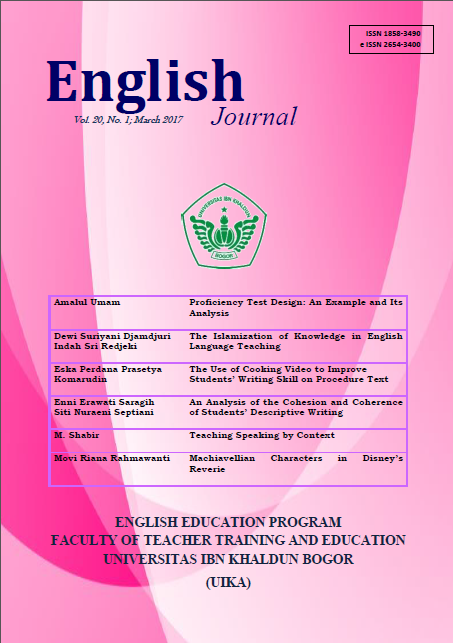PROFICIENCY TEST DESIGN: AN EXAMPLE AND ITS ANALYSIS
DOI:
https://doi.org/10.32832/english.v11i1.1510Abstract
Understanding language proficiency level of second language learners is very important, because it enables teachers to make plan instruction and assessment to meet the students’ individual needs. In contrast, it is not a simple way to create a proficiency test that can be applicable for all learning contexts. It means that teachers should be able to design their own proficiency test that they can use for their contexts. This study is about designing a proficiency test for certain context. An example is given and administered to the targeted context, and the analysis of the result is discussed.References
Bachman, L. (1990). Fundamental Considerations in Language Testing. Oxford, UK: OUP.
Brown, H. Douglas. (2004). Language Assessment: Principles and Classroom Practices. New York: Pearson Education.
Gu, Lin. (2015). Language Ability of Young English Language Learners: Definition, Configuration and Implications. Language Testing, 32(1), 21-38.
Khabbazbashi, Nahal. (2017). Topic and Background Knowledge Effects on Performance in Speaking Assessment. Language Testing, 34(1), 23-48.
Lier, Leo Van (2005). Case Study. In Hinkel, Eli (Eds), Handbook of Research in Second Language Teaching and Learning (pp. 195-
“Proficiency Test Design: An Example and its Analysis” (Amalul Umam)
. New Jersey: Lawrence Erlbaum Associates, Inc.
Yoo, Hanwook. (2017). Measuring English Language Workplace Proficiency Across Subgroups: Using CFA Models to Validate Test Score Interpretation. Language Testing, 34(1), 101-126.

















1.png)




